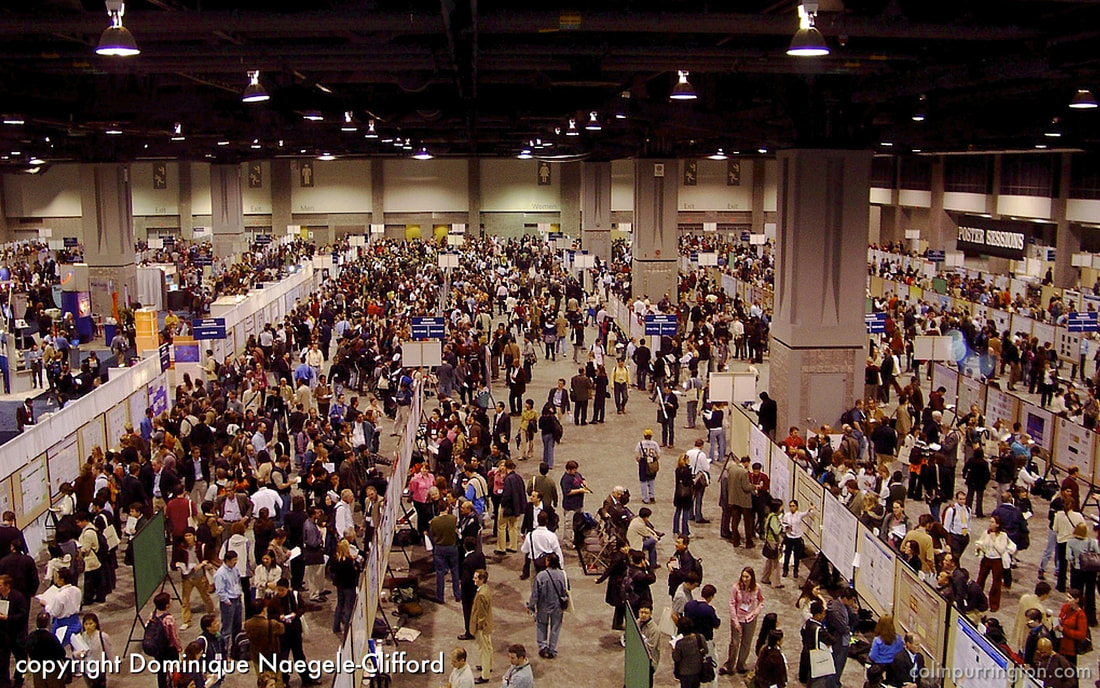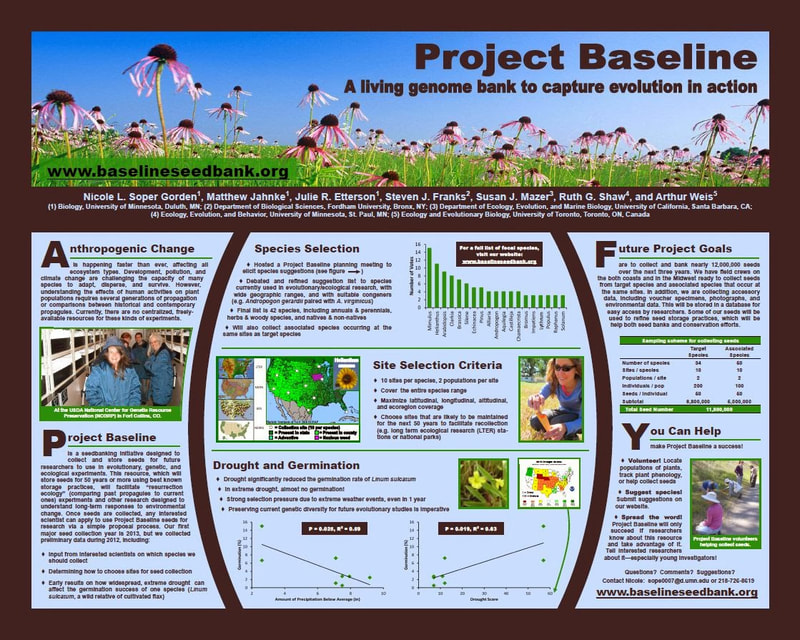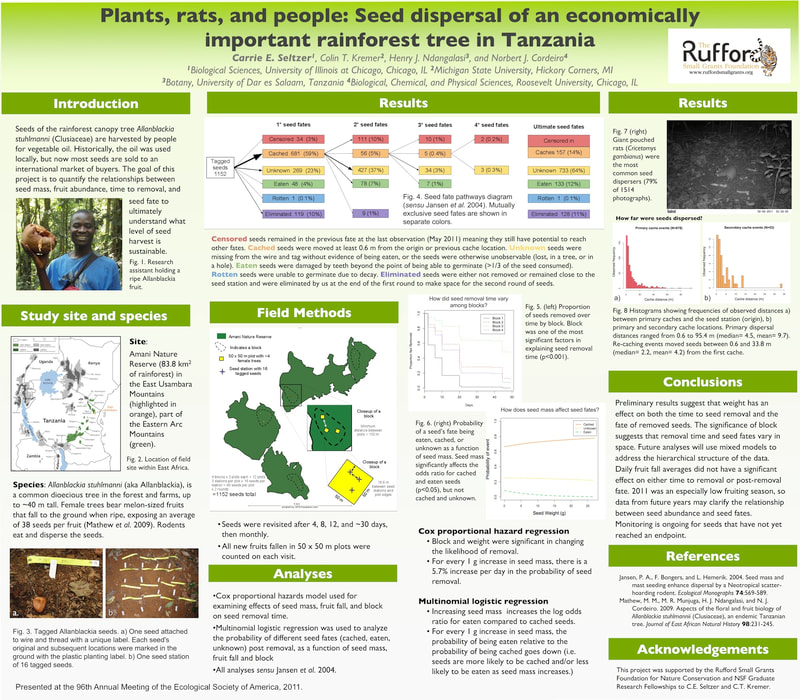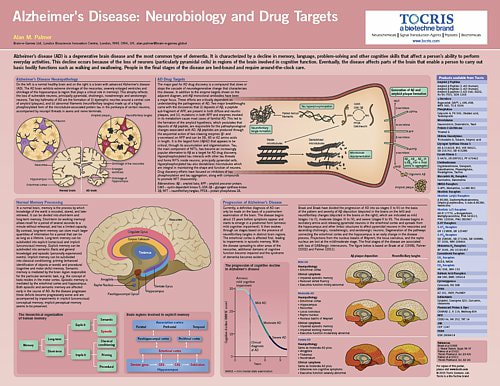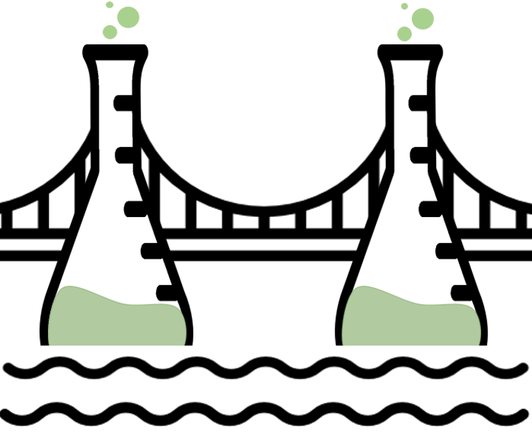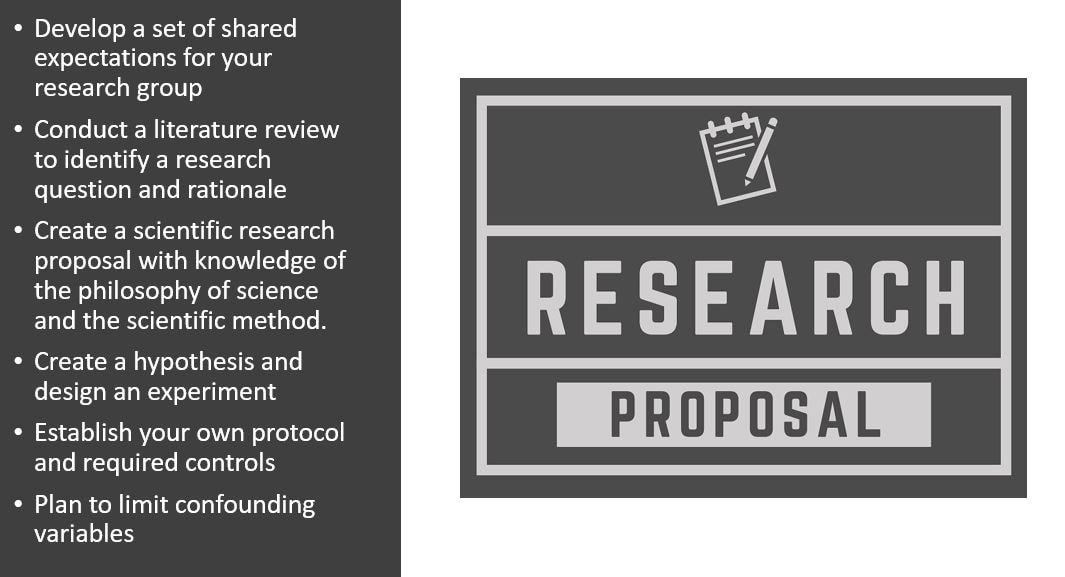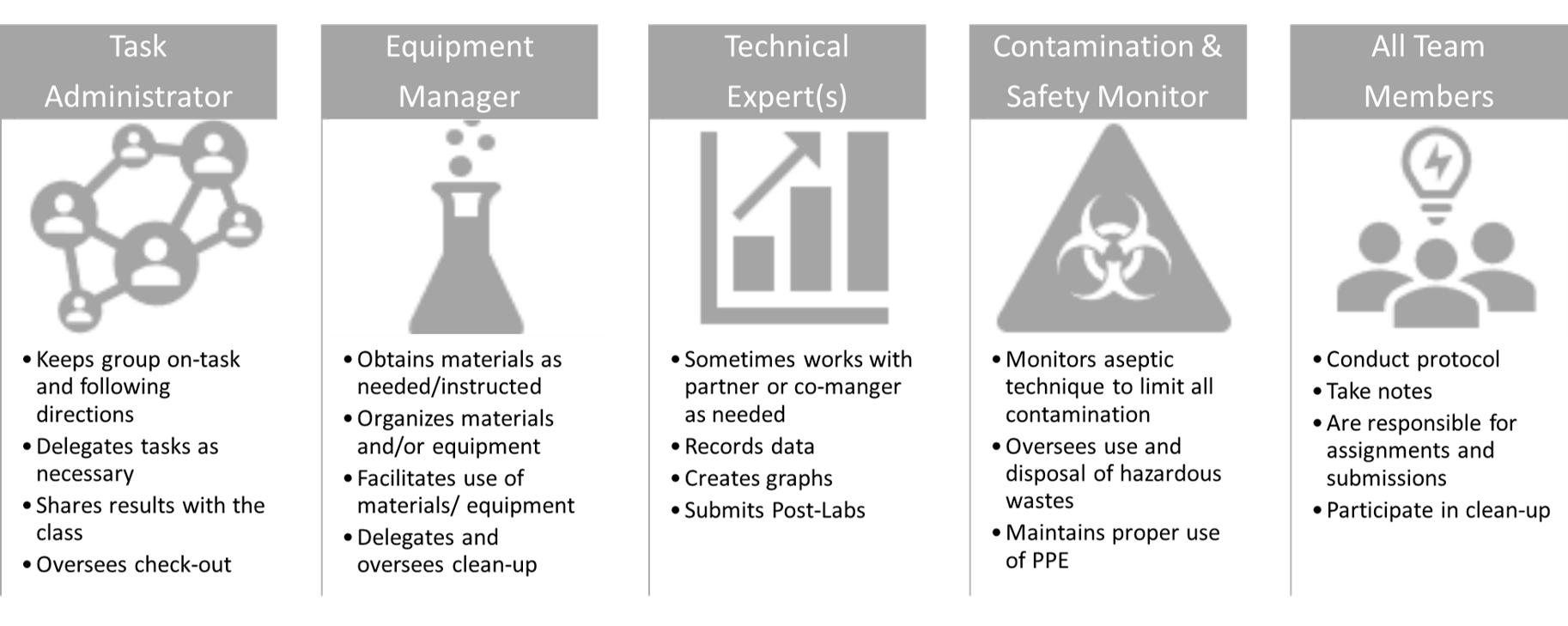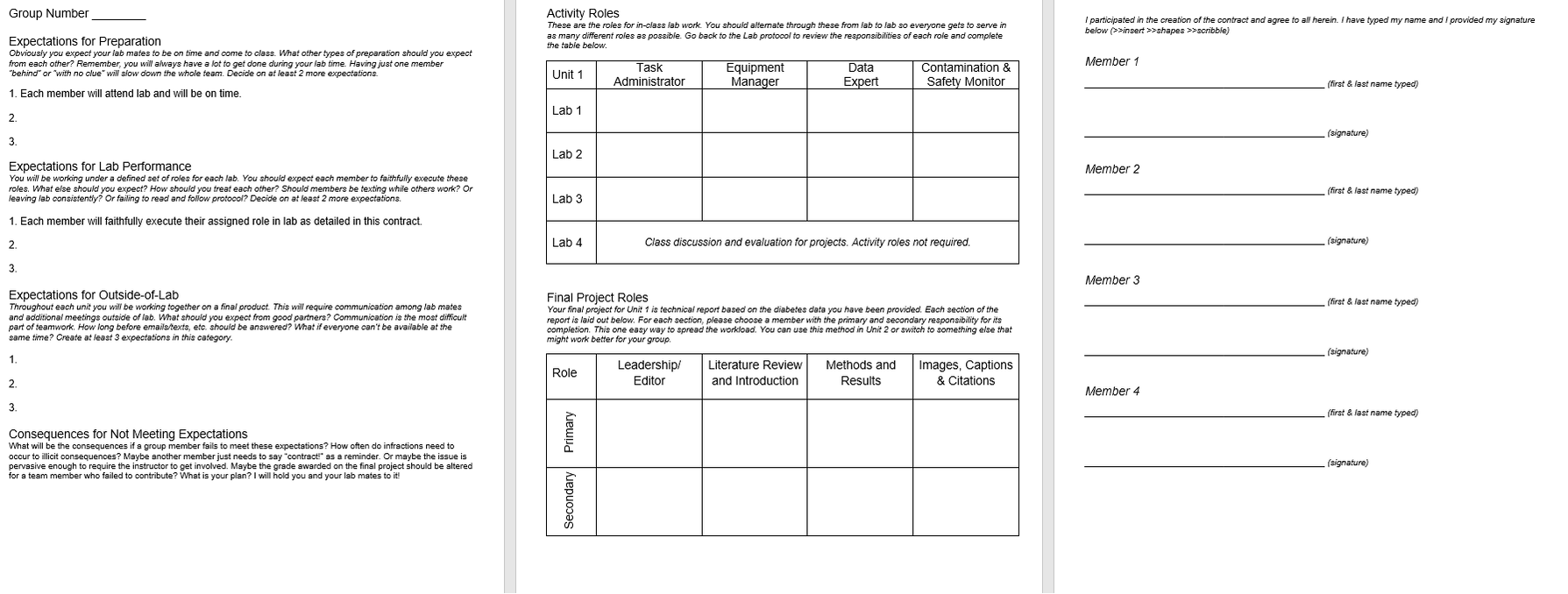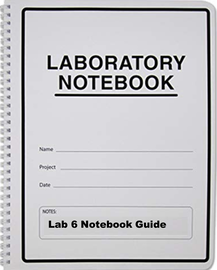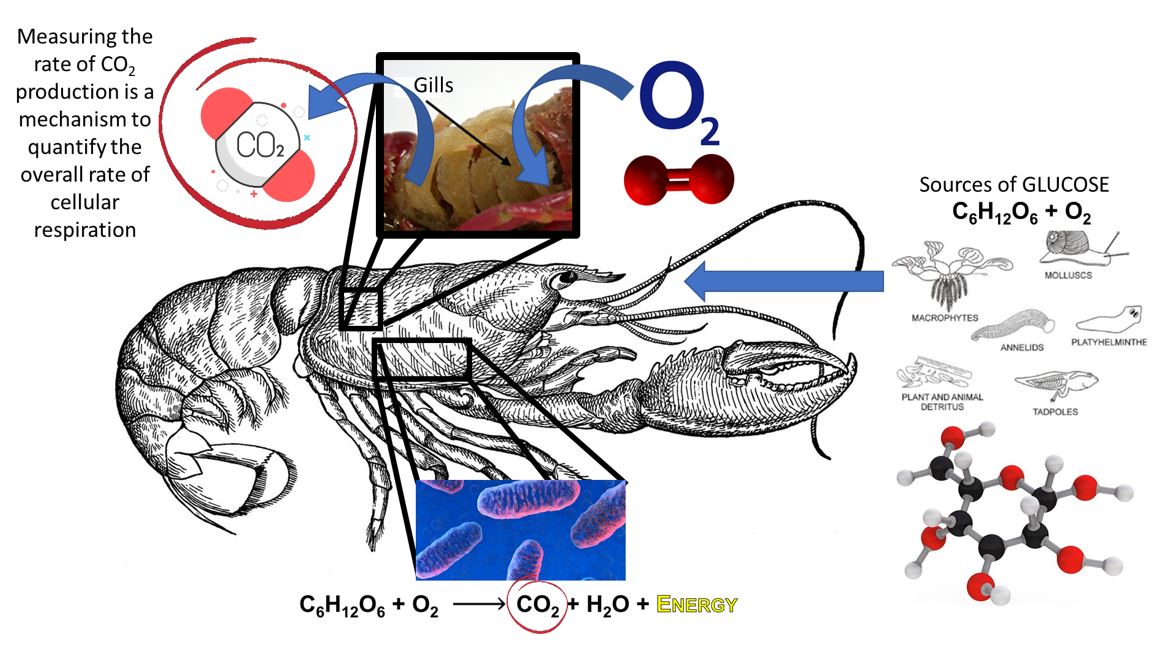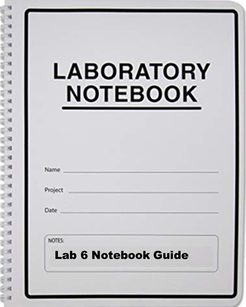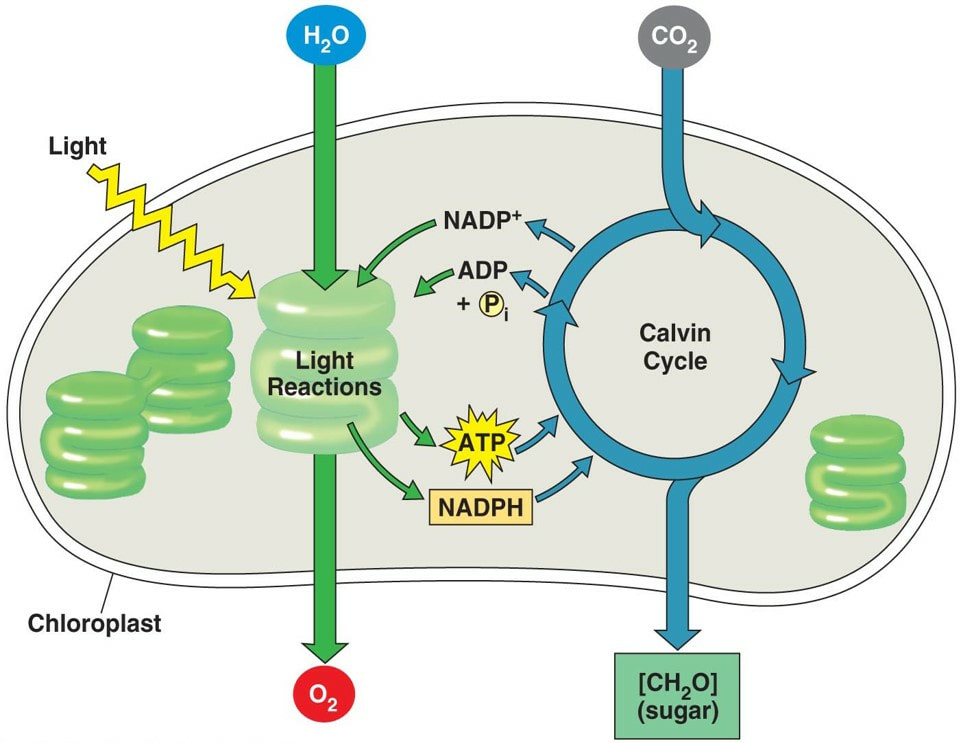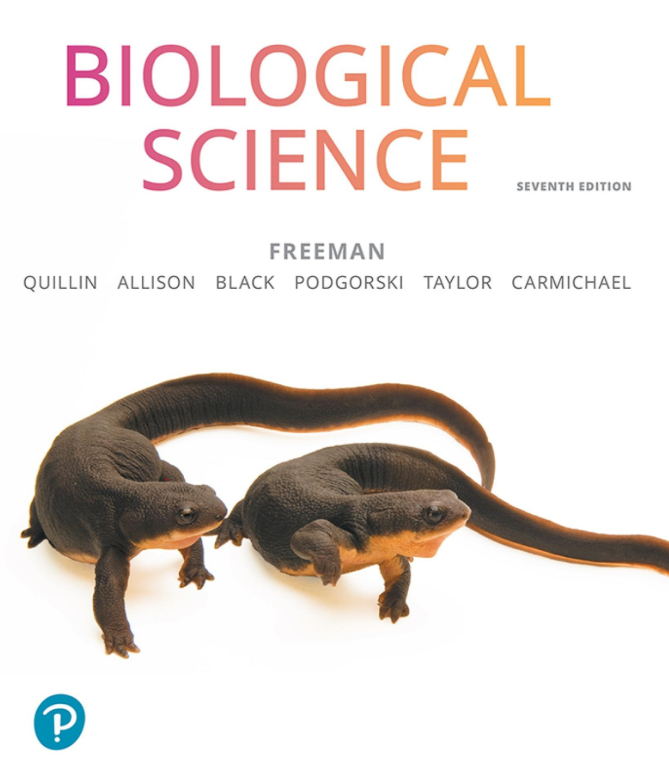Your task in Unit 2 is to explore the factors that may affect metabolic rate (cellular respiration and photosynthesis). In the first lab (Lab 6) you will be designing two research proposals to help answer this question. Please review this pre-lab and external links to prepare for our in-class work. You will review the scientific method and research proposals, and learn about scientific posters. You will be choosing which experiment (respiration in Lab 7 or photosynthesis in Lab 8) to include in your scientific poster at the end of Unit 2.
-
Introduction / Review
-
Do you know enough?
-
What will we do in lab?
-
LABridge
<
>
The Scientific Method & Research Proposals
- Ask a Question: Questions can arise from observations in the field, in the lab, from the scientific literature (e.g., scientific posters, presentations or papers), or from preexisting data.
- Conduct Background Research: This is a literature review process, in which researchers dig deep into what is already known about their topic of choice and what questions still remain. Often, the literature review helps to refine questions and direct hypothesis formation.
- Construct a Hypothesis. A quality hypothesis must be objective, measurable and testable. It must also include a prediction and potential rationale (examples) based in the literature or from previous work.
- Test the Prediction. There are various approaches to research design, based on your research question. These range from purely descriptive, to experimental designs, which involve manipulation of a variable or variables. Regardless of the method selected, the design should have clearly identified variables by type, and should be both valid and reliable.
- Analyze Data and Draw Conclusions. The methods used for analysis are largely based on the research design. In the biological sciences, analysis almost always involves the use of statistical tests and graphical representations of data.
- Communicate Results. This last step is essential. For our understanding of the natural world to grow, new research must be shared, so others can draw on what's known to learn more. Results can be communicated through technical reports, presentations at conferences, scientific posters, and manuscripts which appear in scientific journals.
What is a Scientific Poster?
You will use your research proposals to conduct your own experiments in Lab 7 and Lab 8. You will then communicate the results of whichever experiment you chose in a scientific poster.
The scientific poster is a form of scientific expression and one way researchers communicate their work with the wider scientific community, Most often, researchers will use the poster format as a way to put their preliminary research together and test the waters of scientific critique. Posters often come before presentations and manuscripts and they are presented at scientific conferences in large halls or rooms. Attendees wonder from poster to poster, get a 5 minute brief from the researcher and then a discussion begins. The appearance/content varies widely by field or lab, but they are often produced in PowerPoint and printed as 36" x 48" posters for display.
|
Your Poster: Will be over either your respiration experiment (Lab 7) or your photosynthesis experiment (Lab 8). It will be created in PowerPoint using a provided template. We will print & display the 3 best, which will earn extra credit (TBD).
Lab Groups: You will work in your lab group. You must be an active participant in this assignment. You will be evaluating each other’s contributions via a peer evaluation form. Content: Specific directions on what to include in each section are available on the poster template and the evaluation measures are available in the rubric. |
Formatting: You have a lot of leigh way!
- Colors: Your choice.
- Length: Variable section length. Typically, the results section takes up the most space, but include the least amount of text.
- Font: Use serif font (e.g., cambria or times), non sans serif (e.g., arial or calibri)
- Font size: You can go a bit smaller or a bit larger but stay close to these and be consistent within levels. Title: 80-100pt., Authors: 60pt., Sub-headings: 28-58pt., Body text: 24-32pt., Captions: 18pt.
- Tables & figures: Your design! Stay clean and readable. Tables get labeled (Table 1.) with titles that go above. Figures (diagrams, graphs) get labeled (Figure 1.) with captions that go below.
- Citations: 5 minimum
- Be creative and have fun with this.
Review the poster examples below for ideas!
What will we do in lab and how will we do it?
You will complete three exercises in Lab 6, with Exercise II and III completed simultaneously:
1) Create a Group Contract: Similar to Unit 1, you will begin Unit 2 with a group contract. You likely learned many things about working with your group (strengths and weaknesses) that you should reflect in your new contract.
In discussing the contract, you should decide which group members will take the lead on Lab 7 vs. Lab 8. They will be responsible for putting together the initial proposal, explaining their ideas to other members and for leading the experiment in each respective lab.
1) Create a Group Contract: Similar to Unit 1, you will begin Unit 2 with a group contract. You likely learned many things about working with your group (strengths and weaknesses) that you should reflect in your new contract.
In discussing the contract, you should decide which group members will take the lead on Lab 7 vs. Lab 8. They will be responsible for putting together the initial proposal, explaining their ideas to other members and for leading the experiment in each respective lab.
2) Research Cellular Respiration (Lab 7) and Create a Research Proposal: You will explore available resources and find your own to better understand your test organism, the crayfish, and the process of cellular respiration. You will use that research to construct your proposal, which will be submitted in your next LABridge.
3) Research Photosynthesis (Lab 8) and Create a Research Proposal: You will explore available resources and find your own to better understand chloroplasts, photosynthesis and the light reactions. You will use that research to construct your proposal, which will be submitted in your next LABridge

Look over the Research Proposal Template.

Look over the resources available to you in our Resource Library on crayfish, chloroplasts, cellular respiration and photosynthesis. Just get familiar, no need to dive-in to all the content just yet.
Lab 6: ProtocolYour task in Unit 2 is to explore the factors that may affect metabolic rate (cellular respiration and photosynthesis). In the first lab (Lab 6) you will be designing two research experiments to help answer this question. You will be choosing which experiment (respiration in Lab 7 or photosynthesis in Lab 8) to include in your scientific poster at the end of Unit 2.
Exercise I. Group Work Decision Exercise II. Proposal for Lab 7 Exercise III. Proposal for Lab 8 |
-
Exercise I
-
Exercise II
-
Exercise III
<
>
Exercise I. Group or Individual Work
Working in an online-only format will necessitate a lot of changes.
Procedure
Procedure
- Take some time to reach out to your group and discuss how you will proceed.
- In this lab you will be creating two research proposals, in the next you will be completing an online lab and analyzing provided data as you would have your own data. If we go back to F2F meetings April 6th, you will be working through Labs 6 and 7 without meeting in the lab. If the WKU online-only plan is extended, you may working this way for the remainder of the semester.
- It is up to you and your group to decide how to proceed and how much collaboration each of you is willing to do. Should you decide to work together, use the steps below to delineate roles for Unit 2.
- Please review THESE TIPS, individually, then discuss them with your group.
- Review the description of group roles below.
- Download and complete the group contract form.
- Ensure all members have an electronic copy for reference.
- If you have decided to work together or with a partner, the members working on the respiration project can begin Exercise II, and the members leading the photosynthesis project can begin Exercise III.
- If you have decided to work alone, go ahead and proceed to Exercise II.
Exercise II. Construct Your Respiration Research Proposal
Big Picture! In this experiment you will be provided various crayfish to chose from. You will immerse them in a beaker of water so they may "respire." Which crayfish you chose and what factor(s) you make part of their "beaker-environment" are up to you, and should be based on your research question.
Your primary task in Exercise II is to complete your research proposal for the respiration experiment in Lab 7.
Procedure
Procedure
- Download the Lab 6 Notebook Guide. It is set up to take you through each stage of proposal development.
- Complete your Respiration Research Proposal. Follow along through the steps below and use the additional provided resources as necessary.
- Lastly, please contribute a new resource to our library.
- Save your work and merge it with the respiration proposal if you are working in a group.
- Ensure all members have an electronic copy for reference and be ready to upload the your Lab 6 Notebook Entry in the LABridge for next week.
|
Section 1- Ask a Question: Begin by identifying your primary research question. Remember, research questions can arise from observations in the field, in the lab, or from the scientific literature (e.g., scientific posters, presentations or papers). Brainstorm together about which variable you would like to test and begin looking over some past research that may be informative. You may need to move on to section 2 and come back to section 1 after some research!
REMEMBER! You are designing this experiment so you get to chose the variable you are interested in. Section 2- Research: Our research library will help get you started! Your literature review process will refine your questions and direct hypothesis formation. You cannot create a "good" hypothesis without a potential rationale. You can only ascertain potential reasons "why" through research.
Section 3: A quality hypothesis must be objective, measurable and testable. It must also include a prediction and potential rationale (examples). Think about how your specific hypothesis and predictions connect with the larger body of research of crayfish and cellular respiration.
Section 4: Experiments are designed to test the prediction accompanying your hypothesis. Your experimental design should identify your variables and their type based on your hypothesis. Experiments should be both valid and reliable. You have many decisions regarding the design of your experiment, but the general method is set and explained in detail in the Pre-Lab for Lab 7. Those details are not required in your research proposal.
How will we measure the rate of cellular respiration? ...By measuring the CO2 produced as a bi-product of the metabolic process! We will discuss this method more in Lab 7, but for now you just need to understand we will measure the rate of CO2 produced as an indication of the rate of cellular metabolism. There are also a set of additional factors you should consider in the presentation below. |
Exercise III. Construct Your Photosynthesis Research Proposal
Big Picture! In this experiment you will be provided a solution of active chloroplasts. You will subject those chloroplast to different environments, based on your research question, and measure the rate at which they perform photosynthesis.
Your primary task in Exercise III is to complete your research proposal for the photosynthesis experiment in Lab 8.
Procedure
Procedure
- Download the Lab 6 Notebook Guide if you haven't already. It is set up to take you through each stage of proposal development.
- Complete your Photosynthesis Research Proposal. Follow along through the steps below and use the additional provided resources as necessary.
- Lastly, please contribute a new resource to our library.
- Save your work and merge it with the respiration proposal if you are working in a group.
- Ensure all members have an electronic copy for reference and be ready to upload the your Lab 6 Notebook Entry in the LABridge for next week.
|
Section 1: Research questions can arise from observations in the field, in the lab, or from the scientific literature (e.g., scientific posters, presentations or papers). In Lab 7 we are asking: What factors affect the rate of photosynthesis? Specifically, we want to know what variables could alter the rate of the light reactions.
REMEMBER! You are designing this experiment so you get to chose the variable you are interested in. Section 2: Draw on your knowledge of chloroplasts, the light reactions and photosynthesis. Brainstorm which variables may have an affect on photosynthesis and decide which you would like to test. Begin looking over some past research that may be informative. Our research library will help get you started! Your literature review process will refine your questions and direct hypothesis formation. You cannot create a "good" hypothesis without a potential rationale. You can only ascertain potential reasons "why" through research.
Section 3: A quality hypothesis must be objective, measurable and testable. It must also include a prediction and potential rationale (examples). Think about how your study and your specific hypothesis may connect with the larger body of research on chloroplasts, photosynthesis and the light reactions.
Section 4: Experiments are designed to test the prediction accompanying your hypothesis. Your experimental design should identify your variables and their type based on your hypothesis. Experiments should be both valid and reliable. You have many decisions regarding the design of your experiment, but the general method is set and will be explained in detail in the Pre-Lab for Lab 8. Those details are not required in your research proposal.
How will we measure the rate of photosynthesis? ...By measuring the NADPH produced by chloroplasts in the light reactions! We will discuss this method more in Lab 8, but for now you just need to understand we will measure the rate of NADPH produced as an indication of the rate of light reactions, an therefore photosynthesis. Your chloroplasts will be placed in test tubes with tricene buffer and DIP are necessary to measure the rate of photosynthesis. We'll discuss the details in Lab 8.
There are also a set of additional factors you should consider in the presentation below. |
KAS citation format:
Mountjoy, N.J 2021. Title of page. Biological Concepts: Cells, Metabolism & Genetics. https://www.121cellmetagen.com. Date accessed (MM/DD/YYY).
Mountjoy, N.J 2021. Title of page. Biological Concepts: Cells, Metabolism & Genetics. https://www.121cellmetagen.com. Date accessed (MM/DD/YYY).


